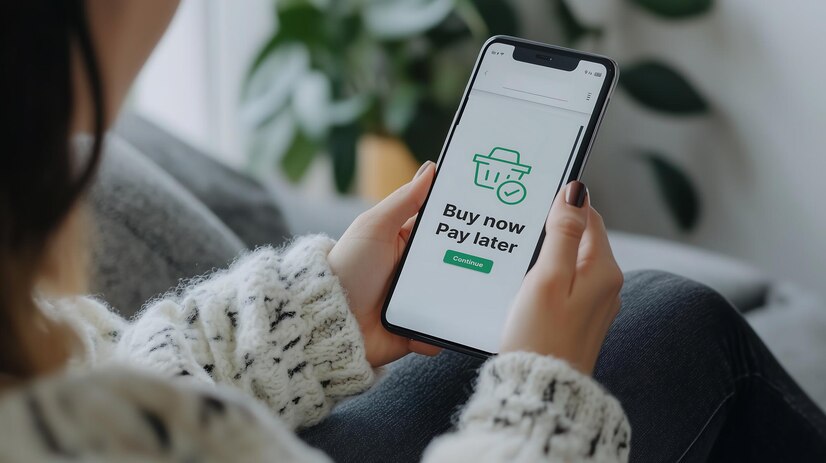A Beginner’s Guide to BNPL App Development

In recent years, the “Buy Now, Pay Later” (BNPL) model has revolutionized the way consumers shop online and in-store. BNPL apps provide a convenient payment solution that allows customers to split payments over time, making expensive purchases more manageable. This model has gained significant popularity among younger generations who prefer flexible spending options over traditional credit cards. For businesses and developers, creating a BNPL app presents a unique opportunity to tap into this growing trend. This guide provides a comprehensive overview for beginners looking to venture into BNPL app development.
1. Understanding the Buy Now, Pay Later Model
The BNPL model is a form of short-term financing that allows consumers to make purchases and pay for them in installments over a set period. Unlike traditional credit cards, BNPL services generally do not require credit checks, offering instant approval based on real-time financial information. This payment method typically divides the cost into four equal payments, due biweekly or monthly, without added interest or fees if paid on time.
- Advantages for Consumers: Flexible spending options, instant credit approval, and interest-free payments.
- Advantages for Businesses: Increased sales, higher customer retention, and an opportunity to attract younger, credit-averse shoppers.
2. Key Features of a BNPL App
When developing a BNPL app, it’s essential to focus on features that prioritize user convenience, security, and functionality. Here are some must-have features:
- Seamless User Onboarding: A straightforward, fast onboarding process is essential. Include identity verification, basic KYC (Know Your Customer) steps, and financial information gathering.
- Instant Credit Approval: Offer a quick assessment process to approve users for credit based on their financial data, often without requiring a hard credit pull.
- Flexible Payment Scheduling: Allow users to choose flexible payment schedules and receive reminders.
- Automated Billing and Reminders: Set up automated billing processes with notifications for upcoming payments.
- Secure Payment Gateway Integration: Integrate reliable payment gateways to ensure secure transactions.
- In-App Shopping and Recommendations: Partner with retailers and display available products or services directly within the app.
- Customer Support and Dispute Resolution: Offer support channels for users to address questions and disputes.
3. Technical Aspects and Development Stack for BNPL Apps
Developing a robust BNPL app requires a carefully chosen tech stack to ensure scalability, security, and functionality.
- Frontend Technologies: Use React Native or Flutter for cross-platform compatibility on both iOS and Android.
- Backend Technologies: Node.js or Python frameworks like Django offer reliability and flexibility. For real-time data processing, consider Kafka or RabbitMQ.
- Database Solutions: NoSQL databases like MongoDB or Cassandra can handle large data sets, while SQL databases like MySQL can be used for transaction management.
- Payment Gateway Integrations: Popular solutions like Stripe or PayPal offer SDKs that support secure and compliant payment processing.
- Security Protocols: Ensure encryption protocols like SSL/TLS for data transfer security, and integrate OAuth or Two-Factor Authentication (2FA) for user authentication.
4. Compliance and Regulatory Considerations
The BNPL sector operates under various regulations, often varying by region. When developing a BNPL app, it’s crucial to comply with financial laws to avoid legal issues. Here are some primary compliance areas to focus on:
- KYC (Know Your Customer): Financial apps must verify user identities to prevent fraud and money laundering.
- GDPR and CCPA: If you are operating in Europe or California, compliance with data privacy laws is essential.
- PCI-DSS Compliance: Any app handling payment data must meet Payment Card Industry Data Security Standards to secure payment information.
- Fair Credit Reporting Act (FCRA): If your app pulls credit reports, it must comply with FCRA standards to ensure transparency and accuracy.
- Consumer Financial Protection Bureau (CFPB): U.S.-based BNPL services must follow CFPB guidelines to ensure consumer protection.
5. Step-by-Step Guide to Developing a BNPL App
Step 1: Conduct Market Research and Define Your Niche
Conduct thorough market research to understand your target audience, competition, and market needs. Identify a niche that your BNPL app can address, such as targeting specific demographics (e.g., Gen Z) or industries (e.g., travel, fashion).
Step 2: Define the Scope and Features of Your App
Define the core features and functionality of your BNPL app, such as flexible payment options, user verification, and payment integration. Create a Minimum Viable Product (MVP) outline to launch a basic version of your app and gather user feedback.
Step 3: Select the Tech Stack
Based on your app’s requirements, choose the appropriate tech stack. Opt for secure and scalable solutions for both frontend and backend that can handle real-time data processing, secure transactions, and user authentication.
Step 4: Design the User Interface (UI)
Develop a user-friendly interface with intuitive navigation. Prioritize simplicity, accessibility, and responsiveness, ensuring that the app provides a seamless experience across all devices.
Step 5: Build the Backend Infrastructure
Set up your backend infrastructure to handle data processing, payment integrations, and user authentication securely. Ensure the backend is scalable to support future growth and secure enough to handle financial data.
Step 6: Integrate Payment Gateways
Work with PCI-compliant payment gateways like Stripe, PayPal, or Square to ensure secure transactions. This step requires testing to ensure a smooth flow of payments and quick resolution of any transaction issues.
Step 7: Implement Security Protocols
Incorporate robust security measures, including encryption protocols, two-factor authentication, and biometric login. Compliance with security standards like PCI-DSS will further protect user data.
Step 8: Test and Launch the MVP
Perform rigorous testing to identify bugs, improve functionality, and assess overall app performance. Launch the MVP in a controlled environment to gather user feedback before rolling out the final version.
Step 9: Monitor and Update Regularly
Once launched, continually monitor the app’s performance, gather user feedback, and introduce updates. Adapt to evolving user needs and regulatory requirements, adding new features to enhance the user experience.
6. Monetization Strategies for BNPL Apps
Monetizing a BNPL app can be achieved through several revenue streams:
- Merchant Fees: Charge merchants a percentage of each sale processed through the app.
- Late Payment Fees: Collect fees from users who miss payment deadlines.
- Interest on Longer-Term Financing: Offer extended payment plans with interest to users who prefer a longer installment period.
- Affiliate Partnerships: Partner with brands to promote products or services directly in-app.
Conclusion
Building a BNPL app like Klarna can be a lucrative endeavor, especially as consumer demand for flexible payment options continues to rise. A successful BNPL app requires a blend of user-friendly design, robust security, regulatory compliance, and strategic partnerships. As with any financial app, it’s essential to prioritize user trust, data security, and seamless payment experiences. By following the steps outlined in this guide, developers and businesses can create a BNPL app that meets market demands and stands out in this competitive space.
FAQs
1. How long does it take to develop a BNPL app?
Developing a BNPL app can take anywhere from 6 to 12 months, depending on the complexity of the features, regulatory requirements, and the number of iterations during the development process.
2. Is it expensive to develop a BNPL app?
The cost of BNPL app development varies based on the app’s complexity, the chosen tech stack, and geographical factors. On average, development costs can range from $50,000 to $300,000.
3. Do BNPL apps charge interest?
Most BNPL services offer interest-free payment options, but some may charge interest if users select extended payment terms beyond the standard 4-installment plan.
4. How do BNPL apps make money?
BNPL apps earn revenue through merchant fees, late fees, and interest on extended financing options. Some also earn through partnerships with brands or affiliate programs.
5. Are BNPL apps safe to use?
When developed with proper security measures, BNPL apps are generally safe. Look for features like two-factor authentication, data encryption, and compliance with financial regulations.







